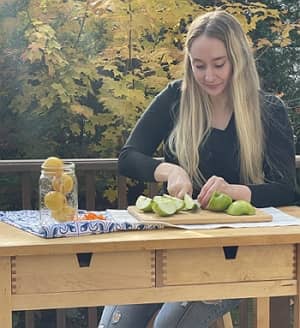Contents
Why Focus on Seasonal Eating?
At Dining with Nature, recipes are organized by season. This encourages flexibility—swap dairy for non-dairy milk or gluten-free bread for regular if needed—but the focus remains on consuming produce in harmony with nature. Eating with the seasons supports your health and the planet, which is why it’s a cornerstone of our nutrition philosophy.
The Health Benefits of Eating Seasonally
Eating seasonally ensures we consume a wide range of fruits and vegetables throughout the year, leading to a more diverse and nutrient-rich diet. This variety is key to supporting gut health, which plays a crucial role in:
- Strengthening the immune system
- Regulating weight
- Controlling blood sugar
- Improving heart health
Additionally, seasonal produce often comes from local farms that may avoid harmful pesticides. Reducing pesticide exposure is crucial for long-term health as these chemicals are linked to numerous health risks and environmental damage.

The Environmental Impact
By relying on nature and avoiding man-made chemicals, small farms help preserve the integrity of the ecosystem. Pesticides and herbicides not only damage soil and water but also disrupt biodiversity, which is vital for a sustainable environment.
Purchasing from local farms reduces your carbon footprint, supports more biodiverse farming practices, and fosters relationships with growers. Explore farm boxes and CSAs to connect with local food sources and ensure you’re eating sustainably.
Supporting Small and Diverse Farms
When we buy from small, often marginalized farmers—particularly those from African American, Latino, and Native American communities—we contribute to a more just and inclusive food system. These farmers have historically faced discrimination, and supporting them can help change the dynamics of the food industry for the better.
I’ll leave you with an article by Kathleen Squires from the Wall Street Journal about Comfort Farms in Georgia, which raises turkeys. It’s a wonderful example of the importance of knowing your food’s journey from farm to table.
To learn more about what Dining With Nature offers for nutrition care – hit the Explore The DWN Programs button below or take a look at our Services page.

